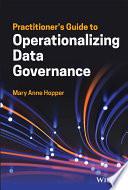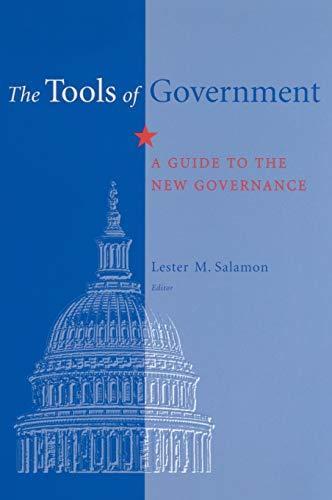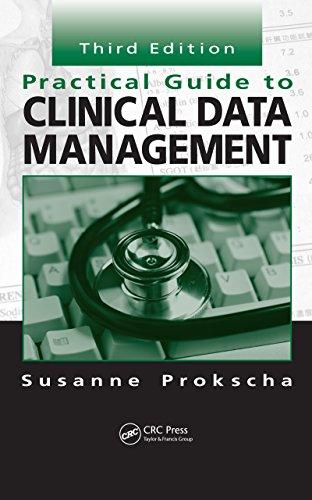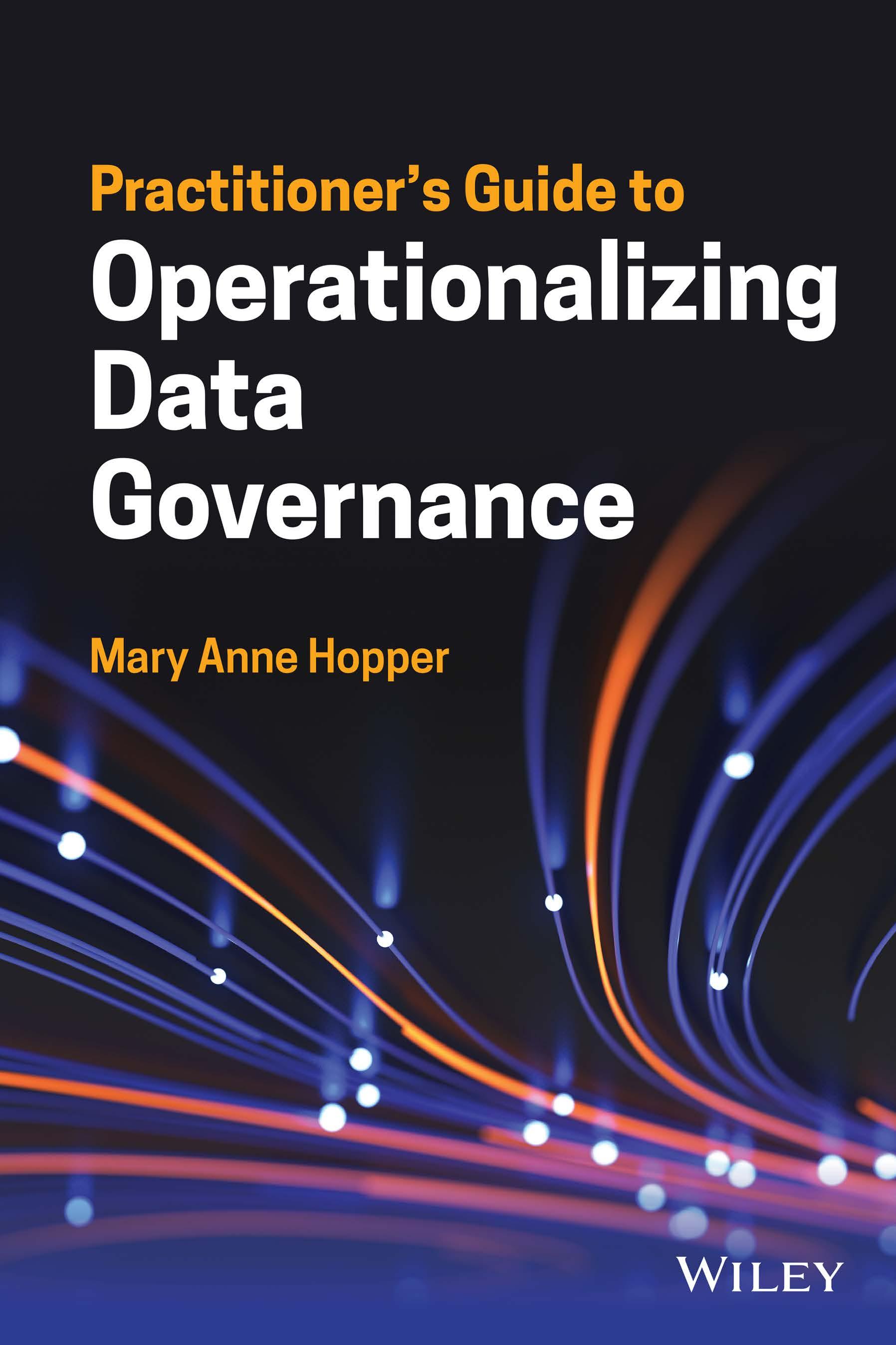Wiley and SAS Business Series
The Wiley and SAS Business Series presents books that help senior level managers with their critical management decisions.
Titles in the Wiley and SAS Business Series include:
The Analytic Hospitality Executive: Implementing Data Analytics in Hotels and Casinos by Kelly A. McGuire
Analytics: The Agile Way by Phil Simon
The Analytics Lifecycle Toolkit: A Practical Guide for an Effective Analytics
Capability by Gregory S. Nelson
Anti-Money Laundering Transaction Monitoring Systems Implementation: Finding Anomalies by Derek Chau and Maarten van Dijck Nemcsik
Artificial Intelligence for Marketing: Practical Applications by Jim Sterne
Business Analytics for Managers: Taking Business Intelligence Beyond Reporting (Second Edition) by Gert H. N. Laursen and Jesper Thorlund
Business Forecasting: The Emerging Role of Artificial Intelligence and Machine Learning by Michael Gilliland, Len Tashman, and Udo Sglavo
The Cloud-Based Demand-Driven Supply Chain by Vinit Sharma
Consumption-Based Forecasting and Planning: Predicting Changing Demand Patterns in the New Digital Economy by Charles W. Chase
Credit Risk Analytics: Measurement Techniques, Applications, and Examples in SAS by Bart Baesen, Daniel Roesch, and Harald Scheule
Demand-Driven Inventory Optimization and Replenishment: Creating a More Efficient Supply Chain (Second Edition) by Robert A. Davis
Economic Modeling in the Post Great Recession Era: Incomplete Data, Imperfect Markets by John Silvia, Azhar Iqbal, and Sarah Watt House
Enhance Oil & Gas Exploration with Data-Driven Geophysical and Petrophysical Models by Keith Holdaway and Duncan Irving
Fraud Analytics Using Descriptive, Predictive, and Social Network Techniques: A Guide to Data Science for Fraud Detection by Bart Baesens, Veronique Van Vlasselaer, and Wouter Verbeke
Intelligent Credit Scoring: Building and Implementing Better Credit Risk Scorecards (Second Edition) by Naeem Siddiqi
JMP Connections: The Art of Utilizing Connections in Your Data by John Wubbel
Leaders and Innovators: How Data-Driven Organizations Are Winning with Analytics by Tho H. Nguyen
On-Camera Coach: Tools and Techniques for Business Professionals in a Video-Driven World by Karin Reed
Next Generation Demand Management: People, Process, Analytics, and Technology by Charles W. Chase
A Practical Guide to Analytics for Governments: Using Big Data for Good by Marie Lowman
Profit from Your Forecasting Software: A Best Practice Guide for Sales Forecasters by Paul Goodwin
Project Finance for Business Development by John E. Triantis
Smart Cities, Smart Future: Showcasing Tomorrow by Mike Barlow and Cornelia Levy-Bencheton
Statistical Thinking: Improving Business Performance (Third Edition) by Roger W. Hoerl and Ronald D. Snee
Strategies in Biomedical Data Science: Driving Force for Innovation by Jay Etchings
Style and Statistics: The Art of Retail Analytics by Brittany Bullard
Text as Data: Computational Methods of Understanding Written Expression Using SAS by Barry deVille and Gurpreet Singh Bawa
Transforming Healthcare Analytics: The Quest for Healthy Intelligence by Michael N. Lewis and Tho H. Nguyen
Visual Six Sigma: Making Data Analysis Lean (Second Edition) by Ian Cox, Marie A. Gaudard, and Mia L. Stephens
Warranty Fraud Management: Reducing Fraud and Other Excess Costs in Warranty and Service Operations by Matti Kurvinen, Ilkka Töyrylä, and D. N. Prabhakar Murthy
For more information on any of the above titles, please visit www .wiley.com.
Practitioner’s Guide to Operationalizing Data Governance
Mary Anne Hopper
Copyright © 2023 by SAS institute, Inc. All rights reserved.
Published by John Wiley & Sons, Inc., Hoboken, New Jersey. Published simultaneously in Canada.
No part of this publication may be reproduced, stored in a retrieval system, or transmitted in any form or by any means, electronic, mechanical, photocopying, recording, scanning, or otherwise, except as permitted under Section 107 or 108 of the 1976 United States Copyright Act, without either the prior written permission of the Publisher, or authorization through payment of the appropriate per-copy fee to the Copyright Clearance Center, Inc., 222 Rosewood Drive, Danvers, MA 01923, (978) 750-8400, fax (978) 750-4470, or on the web at www.copyright.com. Requests to the Publisher for permission should be addressed to the Permissions Department, John Wiley & Sons, Inc., 111 River Street, Hoboken, NJ 07030, (201) 748-6011, fax (201) 748-6008, or online at http://www.wiley.com/go/permission.
Trademarks: Wiley and the Wiley logo are trademarks or registered trademarks of John Wiley & Sons, Inc. and/or its affiliates in the United States and other countries and may not be used without written permission. All other trademarks are the property of their respective owners. John Wiley & Sons, Inc. is not associated with any product or vendor mentioned in this book.
Limit of Liability/Disclaimer of Warranty: While the publisher and author have used their best efforts in preparing this book, they make no representations or warranties with respect to the accuracy or completeness of the contents of this book and specifically disclaim any implied warranties of merchantability or fitness for a particular purpose. No warranty may be created or extended by sales representatives or written sales materials. The advice and strategies contained herein may not be suitable for your situation. You should consult with a professional where appropriate. Further, readers should be aware that websites listed in this work may have changed or disappeared between when this work was written and when it is read. Neither the publisher nor author shall be liable for any loss of profit or any other commercial damages, including but not limited to special, incidental, consequential, or other damages.
For general information on our other products and services or for technical support, please contact our Customer Care Department within the United States at (800) 762-2974, outside the United States at (317) 572-3993 or fax (317) 572-4002.
Wiley also publishes its books in a variety of electronic formats. Some content that appears in print may not be available in electronic formats. For more information about Wiley products, visit our web site at www.wiley.com.
Library of Congress Cataloging-in-Publication Data:
Names: Hopper, Mary Anne, author.
Title: Practitioner’s guide to operationalizing data governance / Mary Anne Hopper.
Description: Hoboken, New Jersey : Wiley, [2023] | Series: Wiley and SAS business series | Includes index.
Identifiers: LCCN 2023001522 (print) | LCCN 2023001523 (ebook) | ISBN 9781119851424 (cloth) | ISBN 9781119851455 (adobe pdf) | ISBN 9781119851431 (epub)
Subjects: LCSH: Database management. | Management information systems—Management. | Data integrity.
Classification: LCC QA76.9.D3 H6564 2023 (print) | LCC QA76.9.D3 (ebook) | DDC 005.75/65—dc23/eng/20230201
LC record available at https://lccn.loc.gov/2023001522
LC ebook record available at https://lccn.loc.gov/2023001523
Cover Design: Wiley
Cover Image: © shulz/Getty Images
For the MAC team (Faramarz, Matthias, Matt, Katie, Noah, and Liz) for all your support and
For Bill for never letting me throw the term “best practice” out there without explaining “the why”.
Acknowledgments xiii
Chapter 1 Introduction 1
Intended Audience 2
Experience 2
Common Challenge Themes 4
Chapter 2 Rethinking Data Governance 17
Results You Can Expect with Common Approaches to Data Governance 18
What Does Work 21
Rethinking Data Governance Summary 23
Chapter 3 Data Governance and Data Management 25
Results You Can Expect Focusing Purely on Data Governance or Data Management 26
SAS Data Management Framework 26
Aligning Data Governance and Data Management Outcomes 38
Misaligning Data Governance and Data Management 43
Data Governance and Data Management Summary 45
Chapter 4 Priorities 47
Results You Can Expect Using the Most Common Approaches to Prioritization 48
A Disciplined Approach to Priorities 50
Utilizing the Model 55
Priorities Summary 64
Chapter 5 Common Starting Points 65
Results You Can Expect with Too Many Entry Points 66
Building a Data Portfolio 66
Metadata 67
Data Quality 70
Data Profiling 75
Common Starting Points Summary 76
Chapter 6 Data Governance Planning 77
Results You Can Expect Without Planning 78
Defining Objectives 78
Defining Guiding Principles 85
Data Governance Planning Summary 88
Chapter 7 Organizational Framework 91
Results You Can Expect When There Is No Defined Organizational Structure 92
Organizational Framework Roles 92
Defining a Framework 94
Aligning the Model to Existing Structures 97
Aligning the Framework to the Culture 100
Simplifying the Model 103
Defining the Right Data Stewardship Model 104
Organizational Framework Summary 109
Chapter 8 Roles and Responsibilities 111
Results You Can Expect When Roles and Responsibilities Are Not Clearly Defined 112
Aligning Actions and Decisions to Program Objectives 112
Using a RACI Model 119
Defining Roles and Responsibilities 126
Data Governance Steering Committee 126
Data Management 131
Naming Names 131
Roles and Responsibilities Summary 135
Chapter 9
Operating Procedures 137
Results You Can Expect Without Operating Procedures 138
Operating Procedures 138 Workflows 146
Operating Procedures Summary 152
Chapter 10 Communication 153
Results You Can Expect Without Communication 154
Communication Plan Components 154
Sample Communication Plan 156
Communication Summary 160
Chapter 11 Measurement 161
Results You Can Expect Without Measurement 162
What Measurements to Define 162
Program Scorecard – A Starting Point 166
Program Scorecard Sample 172
Measurement Summary 173
Chapter 12 Roadmap 175
Results You Can Expect Without a Roadmap 176
First Step in Defining a Roadmap: Implementing Your Framework 176
Defining a Roadmap 178
Formality First or Save It for Later? 184
Critical Success Factors 185
Roadmap Summary 188
Chapter 13 Policies 189
Results You Can Expect Without Policies 190
Breaking Down a Policy 190
Contents of a Policy 192
Policy Example – Metadata 193
Policy Example – Data Quality 200
Policy Summary 204
Chapter 14 Data Governance Maturity 207
Results You Can Expect With Maturity 208
Data Governance Maturity Cycle 209
Maturing Your Program 215 Summary 216
About the Author 217
Glossary of Terms 219
Index 221
Introduction
INTENDED AUDIENCE
As long as the practice of Data Governance has been around, the concept continues to lack sustainable adoption in many organizations. My main objective with this book is to share my experience and help you and your organization on your journey, no matter where in that journey you are.
My best guess is that you are looking at this book as a guide for one of the following reasons:
j Your organization is thinking about Data Governance.
j You have been tasked with Data Governance.
j You need to get your Data Governance program back on track.
j You have acquired a tool and want to get the most value from your investment.
j You continue to have the same data quality issues over and over.
j You attended a conference and learned about Data Governance and think it is something you need.
The content in this book is meant for a large audience because Data Governance impacts the entire organization. Whether a senior leader or an individual contributor, you may be asked to participate at some level in Data Governance, actively or passively.
This book guides you through practical steps in applying Data Governance concepts to solve business problems by adopting a disciplined approach to Data Management methods. The chapters cover prioritization, alignment of Data Governance and Data Management, organizational structures, defining roles and responsibilities, communications, measurements, operations, implementation, and policies. All of the examples presented are not conceptual; they are real-world customer examples that can be applied to your specific organization.
EXPERIENCE
You most likely have an interest in not just Data Governance, but in data itself. Do you remember your “Aha” moment that turned you into a data junkie? I remember mine clearly. In the early 1990s, I
worked for a small naval architectural firm. The focus of the firm was primarily custom high-end racing sailboat designs, including the America’s Cup. One day my boss brought in a floppy disk and asked me to take a look at what was on it. Apparently, we had a client who thought his brand-new boat was slow. The disk contained the data dump from the boat’s instruments. There were fields like time of day, heading, wind velocity, and boat speed. I was able to parse the data and essentially recreate the races with the available data points. What I learned was that the boat tacked nine or ten times on the first leg of each race. I know not all of you are expert sailboat racers but take my word for it; tacking that many times on any leg of a race in a big boat is slow. What did that mean for my boss? He was able to have a different conversation with our client. We were no longer defending boat design or building materials but instead talking about racing tactics and offering suggestions for improvements there first.
That day changed my view of the power of data and from that point forward I chose classes and career roles that were focused on data. Initially, I focused on database development and support and then transitioned into data warehouse development. On the IT side, I managed the development of platforms to support finance and treasury processes as well as the re-platforming of a home-grown loan servicing system. That experience enlightened me to the need for data quality processes and the understanding of data lineage and documented business rules. There came a time when I transitioned into project management, product ownership, and finally consulting. The consulting role is what has helped me most in hearing customer challenges and helping them solve those problems by instilling discipline in Data Management processes.
Over the years, I have worked with hundreds of clients across all industry verticals to help them establish that discipline in Data Management practices. In other words, helping them to establish Data Governance programs that align with their individual organization’s business objectives while also considering their maturity, culture, and appetite for Data Governance.
This book is not only a reflection of a tested and proven methodology but also my experiences in what works and what doesn’t work, things to not get hung up on, and where best to focus efforts. Some of
the chapters are shorter than others but I still believe the topics are important enough to cover. My hope is that this book helps you and your organization in your own Data Governance journey.
COMMON CHALLENGE THEMES
Most of what I’ve heard over the years can be broken down into a set of common themes. One of the best ways to talk about those themes is to share with you what I’ve heard my clients say. Every quote is directly from a customer. If any of these quotes resonate with you, then formalizing Data Governance can help. You will see these themes again in future chapters.
Metadata
Metadata is the practice of gathering, storing, and provisioning information about data assets. As important as it is to collect and maintain, it is a practice that does not formally exist in most organizations. Most of my customers might not necessarily use the term metadata, but the concept is top of mind for them. There is a desire to have common terms defined and have a single repository to maintain information about those terms. Because there is no formal metadata process or repository, users spend a lot of their time trying to understand data on their own or relying on others to interpret meaning for them. Another byproduct from the lack of metadata process is that users complain of not knowing what data is available to them. Always keep in mind that metadata is a precursor to data quality; I will write more about that topic in later chapters. Here is what clients have said:
j “we need Rosetta Stone for our data”
j “metadata is so important and it doesn’t exist”
j “the most time-consuming part is to find what you’re looking for”
j “would be nice to follow the trail”
j “can’t get to confident decisions without common definitions”
j “a little bit of detective work and a little bit of knowledge”
j “this is what I mean when I say ‘this’”
j “we haven’t the foggiest idea of what the denominator is”
j “you get the data and it’s not what you meant”
j “some people just want to call it something different”
Access to Data
Oftentimes, there are very few people with the “know-how” and the tools to access data. Users who do have direct access feel they must navigate a labyrinth to get to the data they need. That labyrinth includes multiple reports, accessing tables, or calling people who have knowledge of data structures. Because of this, users find it easier to maintain their own datasets instead of accessing a common repository. In most organizations, users are anxious to have access to tools to make it easier to use data.
Here is what clients have said:
j “we got to know what the hell we got”
j “our issue isn’t so much storage, it’s access”
j “quit parking data on some machine”
j “a whole lot of horsepower to pull data out of that system”
j “you have to have your DNA tested before you get access to it”
j “not knowing something exists is a greater liability than not using what is available”
j “a lot of what we’re doing seems so hard”
j “information does not seem readily available”
j “manual data exercise to put it together”
j “we have so much information out there in so many places”
j “Excel becomes the big workhorse”
j “we’ve created a process to deal with lack of access to information”
j “want to hire an analyst, not a SQL person”
j “high-priced analyst just getting data for people”
Trust in Data
Users want the ability to make solid decisions on trusted data that is deemed a definitive source of truth. However, users feel there is a lack of consistency across data sources. Some of the reasons for this could be related to data latency, poor data collection practices, a lack of data understanding (e.g., data acceptance, service level agreements, data remediation, and data profiling), or different groups creating and maintaining their own copies of data. This results in users feeling they spend a significant amount of time validating or defending the data they do use.
Here is what clients have said:
j “depending on which query you run you get a different answer”
j "can’t create individual sources of truth”
j “the place we pull the data from doesn’t balance to itself”
j “we don’t know how reliable the data is”
j “you trust the data until you know it’s not right”
j “if you can’t fix the problem you work around it”
j “how do we know what an error looks like?”
Data Integration
Data integration consists of processes for moving and combining data that reside in multiple locations and providing a unified view of the data. In many environments, users who need access to integrated data are essentially required to pull several reports or datasets and then integrate on their desktop using MS Access or Excel. There may also be a lack of formal processes or tool usage across divisions and even in IT. More often than not, this results in differing business rules that are applied to data, which turns into discrepancies in the data results.
Here is what clients have said:
j “I’m living in spreadsheet hell”
j “really no linking it all together”
j “right now, it’s fragmented”
j “all our stuff doesn’t talk to each other”
j “being able to stitch data together is what we need”
j “our systems have never been organized to allow us to answer questions”
j “almost every prototype that we did last fiscal year had to do with the difficulty of pulling data from multiple datasets”
j “we have a lot of questions, we have a lot of data, but we can’t pull it out easily”
Data Ownership
Users do not know who to contact when there are data questions. There is a desire to have a named data owner for the various domains who can answer questions, address issues, and help users understand data usage guidelines for given datasets. Here is what clients have said:
j “you’re stepping on toes every time you go in there”
j “everybody wants to control their own fate”
j “that’s our data so we should be able to keep up with it”
j “lack of accountability for data responsibility”
j “we don’t really know who does that”
Reporting/Analytics
Users are becoming more data aware. Although some users only require operational reports, there is a growing curiosity and desire for more advanced analytic capabilities. This makes the reporting and analytic platform (e.g., data warehouse, data mart, date lake, etc.) being part of the overall strategic plan more important than ever. Most users feel it takes up a lot of their time to get reports and like the concept of a single point of entry for all of their reports as opposed to reports within the various applications that they are forced to self-integrate.
Here is what clients have said:
j “how much of that data is relevant to the next level of the department?”
j “I don’t think people realize what we could do [if our data were integrated]”
j “very myopic view of the data”
j “[we need to be able to provide] reliable, repeatable answers to questions”
j ”the most time-consuming part is to find what you’re looking for”
j “would like to have a dashboard to share accurate information”
j “it’s more art than science”
j “information is perceived as ad-hoc”
j “used to managing without information”
j “too much reliance on old data to make current decisions”
Data Architecture
While most organizations have an architecture practice in place, the teams often lack authority because they do not have a formally defined charter. There is no formal data strategy to help set the team’s direction and enable it to define standards and guidelines for identifying, provisioning, storing, and integrating data. With newly formed teams especially, the focus is on new applications instead of the entire enterprise data landscape that has been growing for years with no formal practices in place.
Here is what clients have said:
j “there have been so many architecture hands over the years”
j “we are duplicating a lot of information”
j “[there is] no logic in how we approach managing data”
j “data should be accessible regardless of where its source is”
j “it’s extremely laborious”
j “tendency to work like we’re all artisans here”
j “by the time you figure out what everyone else is doing it becomes faster to do it yourself”
j “we’re on the bleeding edge of end of life”
j “[it takes] a whole lot of horsepower to pull data”
Reliance on Individual Knowledge
I cannot remember the last time I was with a customer who did not feel overly reliant on go-to people to help them with understanding, getting at, or validating data or reports. Many of the things I talk about in this section are symptoms of an “I know a guy/gal” culture that becomes embedded in the organization because of a lack of a shared data dictionary, unknown data quality, difficulty in accessing data or reports, or an inconsistent data architecture.
Here is what clients have said:
j “a little bit of detective work and a little bit of knowledge”
j “if I need the data, so and so can whip me up a SQL query”
j “it’s a fishing expedition to find people who can get you information”
j “not everybody knows everybody”
j “need to unlock the creativity of the bright people in our organization”
j “I should be able to run my reports”
Culture
Kicking off a Data Governance program or breathing new life into an existing program will more than likely require a culture shift. This can be one of the largest hurdles in overall sustainability of your program. This culture shift usually involves two things. The first is communicating across division or line of business silos. Communication involves everything from policies to policy compliance reporting to program performance. The second is in data sharing. I am often told that people want access to
data not created in their focus area, but others just do not want to grant access because they are data hoarders. More often than not, I find that people are reluctant to share because they are afraid of how the data may possibly be misused or misinterpreted.
Here is what clients have said:
j “[we are] great at planning but fall short on implementation”
j “divisions operate within their own zones”
j “we have a culture of independence and resistance”
j “[there will] always be people out there doing crazy s**t”
j “we’re beyond ‘it would be nice to have’”
j “lots of good people who do lots of good work”
j “we have departments where all they do is protect themselves against bad data”
j “we don’t teach data awareness”
j “focus a lot of our measures on things that are easy”
j “what we do is reactive”
HOW DATA GOVERNANCE CAN HELP
Let’s think about the themes again, and I will provide some examples of how Data Governance can help. There is definitely cross-over in some of these areas. For example, providing metadata to users will help with data access challenges in better understanding what data is available for use.
Metadata
Data Governance provides the process for collecting, updating, storing, and provisioning. A metadata policy will contain not just the process but what attribution should be collected about what data in the environment.
This helps users because they have access to common business terms (rationalized across different sources) and some sort of consolidated
and updated data dictionary. I will explore metadata in more detail in Chapter 5, Common Starting Points, and Chapter 13, Policies.
Access to Data
The Data Governance organization may not own a policy for data access but can provide the communication mechanism for standards with regard to how users will access data resources. Modes of access may be through common tools or interfaces and be dependent on user roles and skill sets. With these policies in place, users will enjoy easier access to data with data access tools as well as a better understanding of what is in the data ecosystem for their use.
Trust in Data
This is a central component of any Data Governance program as data quality is top of mind for all users. A data quality policy will include processes and standards for data profiling, data acceptance, remediation, continuous monitoring, and reporting. A solid data quality process builds trust between data and users. Instead of defending definitions and applied business rules, analysts can actually spend their time interpreting the results of analyses to inform future decisions. Like metadata, data quality will be specifically addressed in the Common Starting Points and Policies chapters.
Data Integration
Policies and standards can be developed to ensure consistent practices when it comes to integrating data across multiple tables or schemas. These policies are typically developed and maintained by some type of Data Management team, but they are Data Governance policies, nonetheless. A Data Governance organization may require the policies, and once established, developers can be more consistent in
developing reusable components that can be more easily updated or maintained. Standards may also define what tools are used for data integration and business rule development.
Data Ownership
Like a lot of other words in the Data Governance space, Data Owner means different things to different people. One of the key outputs of a Data Governance program is defining roles and responsibilities. Whether or not a role is called Data Owner, there will be a role that users understand to be their go-to person. This reduces angst with users and saves them time when they have questions about a particular dataset, report result, or even just a general question. This role can also help establish data usage guidelines so other users understand what they can and cannot do with certain pieces of data.
Reporting/Analytics
Data Governance policies can document changes to business rules or external data impacts, which might be necessary to provide relevant context to data users. An example might be the need to know when legislative policy changes take place. In addition, standards might define what tools which users will utilize to build or access reports or datasets. These standards provide consistency and ensure reliability of analyses and reports. It should go without saying that metadata and data quality are necessary components to support robust reporting and analytic platforms.
Data Architecture
Data architecture is foundational to understanding what data is, where it is stored, how it is moved across different systems, and how it is integrated (yes, data integration). Data architecture policies include standards for data
modeling, naming, and ETL processes. Having these policies in place helps to ensure more scalable, repeatable solutions that reduce development efforts because of consistency across datasets and reusability of data and code.
Reliance on Individual Knowledge
While there will not be a specific Data Governance policy to address this topic, a maturing Data Governance program will reduce individual reliance because there are policies and processes that address metadata and data quality as well as defined roles and responsibilities. The end goal here is to create as much of a self-sustaining data ecosystem as is feasible for a given organization.
Culture
Like the reliance on individual knowledge, Data Governance will not create and maintain policies, processes, or standards that address an organization’s culture. The culture shift becomes a byproduct of having the other policies in place. For example, when there are policies in place (that you are compliant with) that address metadata, there will be less ambiguity about data assets and users will understand what data means so they are less likely to inadvertently misinterpret a definition. That in itself leads to breaking down division silos and promotes data sharing. That becomes a win-win across an organization.
Chapter 1 - Introduction Summary
I have given you a welcome, shared my experience, and explored common themes and how Data Governance can help solve those problems. In closing, I offer a short overview for each of the upcoming chapters. You can read straight through or choose a topic that is of particular interest to you.
Chapter 2 - Rethinking Data Governance
This chapter will explore popular approaches to Data Governance and walk you through a high-level disciplined approach to planning, designing, and launching a program. Other chapters will detail the concepts outlined in this chapter.
Chapter 3 - Data Governance and Data Management
I will share a detailed framework for Data Governance and Data Management that includes Data Governance, Data Management, Data Stewardship, Business Drivers, Solutions, and Methods. Each component of the framework will be described in detail.
Chapter 4 - Priorities
In order to be successful in Data Governance, you need to have focus. I will share with you prioritization approaches. By the way, these work for non–Data Governance–related activities as well.
Chapter 5 - Common Starting Points
The most common starting points for Data Governance are metadata and data quality. I will talk about these two concepts in detail as I expect they will be foundational to your program.
Chapter 6 - Data Governance Planning
Data Governance planning begins with defined program objectives. They are truly the cornerstone for program activities, defining roles and responsibilities, measuring and monitoring, and communication. I will provide guidance as well as examples for creating objectives. Guiding principles are also important in that they provide direction for a program. Like objectives, I will provide examples you can use as a starting point.












